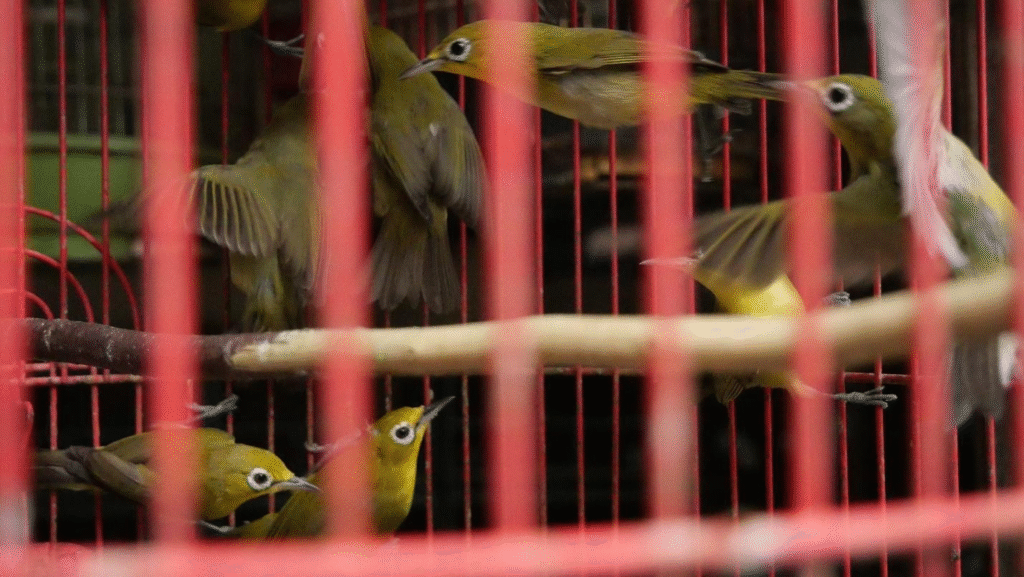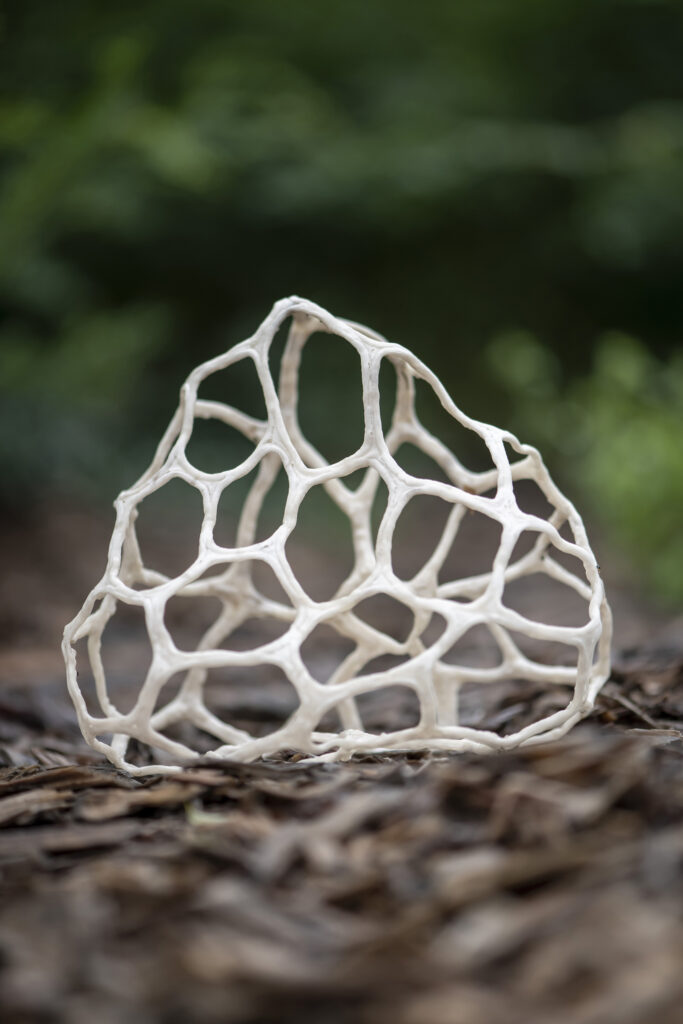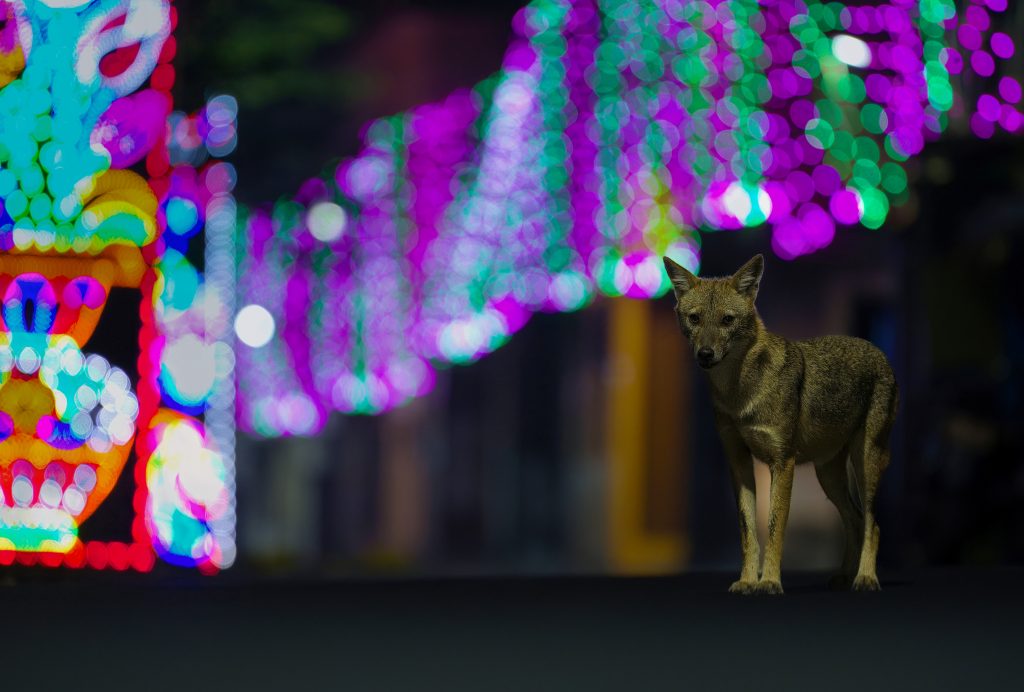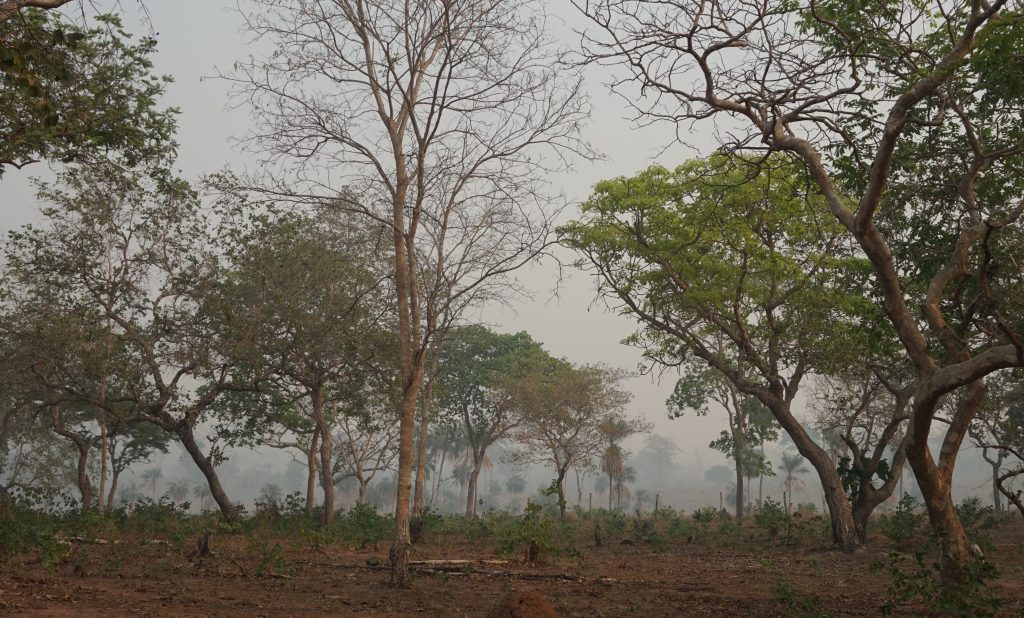When out watching bugs in a group, as I was doing, one often doesn’t have the luxury of observing intricacies. The likelihood of others badgering you to move so they can have a closer look or take a photograph is high. The possibility of the group discovering another interesting bug and abandoning the bug under the limelight also exists. A jewel bug, which had enamoured onlookers, was thus abandoned when someone in the group exclaimed, “Look, a common emigrant!” I clicked a quick photograph of the flashy beetle navigating the leaf contours of a blue porterweed before moving ahead to catch a glimpse of the flitting butterfly.
Dragonflies and damselflies abounded near the wetlands I tramped along. When I stumbled upon an exuviae straight out of a science fiction movie, it didn’t take long to guess its owner: a young dragonfly had just completed the aquatic stage of its life. Ready to take wing, it had climbed up the stalk of a plant, shed its larval case, and joined its squadron. A slow process that can take hours, the emergence from the casing, which tears from the back, is amazing to witness.
Remarkably, some spittle bugs had chosen the same spot to undergo their transformation into froghoppers. In their nymphal form, these bugs feed on plant sap, releasing air from their abdomen into the watery urine they excrete to create bubbles. Enclosed in this bubbly foam resembling saliva, which earns them their name, the bugs stay hidden from predatory insects and birds until they are ready to leap away as froghoppers.
Land crabs such as this begin to appear during the monsoon along roadside streams. Many get crushed by vehicles as they cross the tarmac.
The common tiger (Danaus genutia) seen here feeding on the nectar of a silver cock’s comb, is one of the most common butterflies found in India. It closely resembles North American monarch butterflies, which are famous for the thousand-mile migration they undertake. Unpleasant to smell and taste, the butterfly, also known as the striped tiger, uses its prominent markings and striking colouration to advertise its unpalatability to predators.
Moths, attracted by sources of light, have an uncanny knack for popping up in the most unexpected of places. I found this Olepa ricini on my bathroom door one evening, nonchalantly invading my privacy. Or was I invading its space?
Despite hosting a wide variety of organisms, the intertidal zone seldom receives its due as a habitat thriving with all manner of life forms. Pictured here is a longtail butterfly ray, captured and discarded on a beach by fishermen. Found along the sandy bottom of inshore waters, these rays are threatened by overfishing and often caught as bycatch in trawl nets.
A surprise is always lying in wait on the forest floor. The concentric circles around this fortress-like nest reveals the identity of its owners—a colony of harvester ants. The nest serves as a godown for storing the seeds they harvest from different types of grasses. After the seeds are consumed, the coats are discarded and can be seen around the nest.
I almost walked through the web of this dazzling signature spider (Argiope anasuja), which had cast its silky home in the middle of a country path. A zigzag pattern (not visible in this photo) resembling letters in the centre of its web earns this arachnid its moniker—the writing spider. Building its nest close to the ground enables the spider to trap foraging bees and wasps. Sunlight reflecting off the intertwined hair on the spider’s grouped limbs fool the nectar gatherers into believing that the four-legged, brightly coloured creature is a flower. As in the case of most spiders, the female signature spider is much larger than the male, who can usually be found on a smaller web nearby.
Found in freshwater bodies such as rivers, streams, lakes, ponds and marshes, the Indian flapshell turtle (Lissemys punctata) is widely distributed across India. Named so due to a flap which covers its limbs when it retracts into its shell, these reptiles are encountered in irrigation canals and temple ponds as well. Their relative abundance has made them an easy target for poachers who trap them to feed the increasing international demand for turtle.






